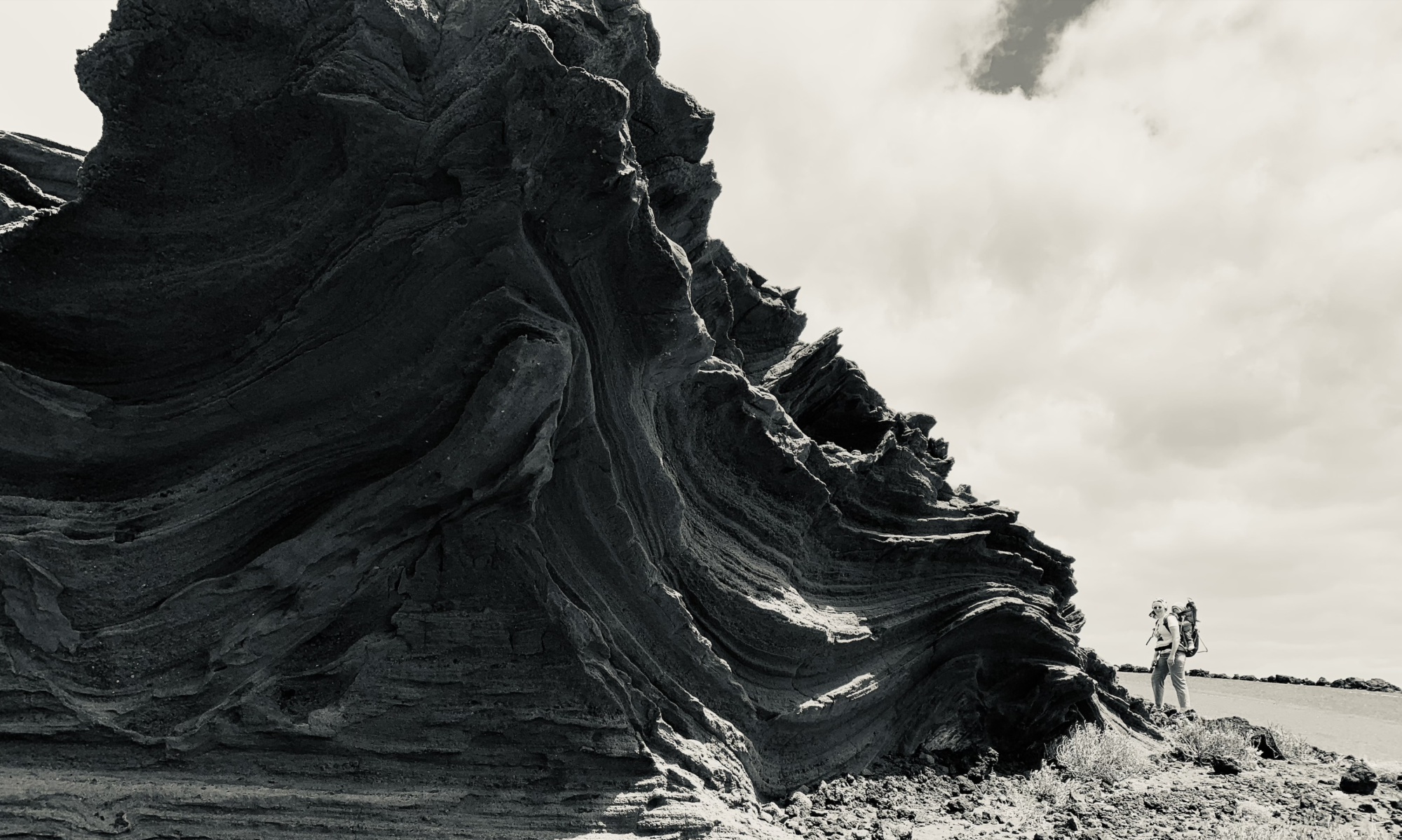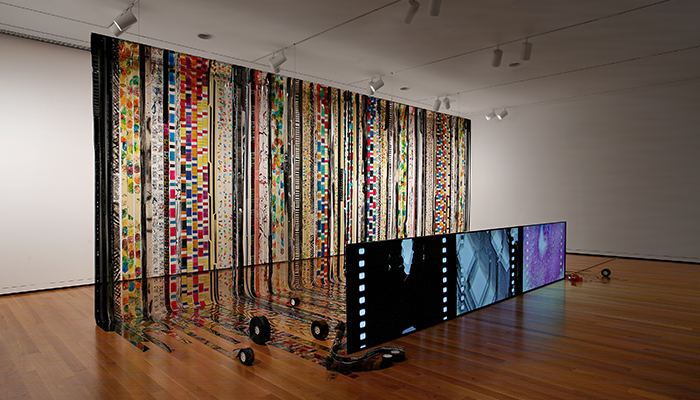ZKM Center for Art and Media in Karlsruhe, Germany has published online a video recording from my recent book presentation (September 15, 2017). The video is accessible by clicking on this link.

RESEARCH, WRITING, TEACHING, ADVISING
ZKM Center for Art and Media in Karlsruhe, Germany has published online a video recording from my recent book presentation (September 15, 2017). The video is accessible by clicking on this link.
This past Tuesday, October 10th, my new book Paik’s Virtual Archive: Time, Change and Materiality in Media Art was launched at the UCL Institute of Advanced Studies in London (link to the event). It was accompanied by a panel discussion – Permanent Impermanence – with Briony Fer (Profesor of Art History at the UCL Department of History of Art) and Sarah Cook (Dundee Fellow and curator at the University of Dundee). Scholarly, curatorial, museological, and conservation perspectives were combined to provide insights into the intricacies and complexities of media artworks. The panel was enriched by interesting questions and comments from the audience. The well-attended event was followed by a wine reception. I was very pleased to see many good friends and colleagues and am grateful for such good reception of teh book! Below are a few visual impressions from the evening.
The book can be purchased following this University of California Press link. If you are interested in reviewing the book contact me at h.holling@ucl.ac.uk.
This Friday, September 15th, 6-8pm, I will present my recently published Paik’s Virtual Archive: Time, Change, and Materiality in Media Art.
Dr. Hanna Hölling, Dozentin für Kunstgeschichte und materielle Kultur am Institut für Kunstgeschichte des University College London, wird am Freitag, den 15. September ihr 2017 erschienenes Buch »Paik’s Virtual Archive« präsentieren, welches die Werke des Urvaters der Videokunst Nam June Paik analysiert.
In »Paik’s Virtual Archive« betrachtet Hölling die Identität von Multimedia-Kunstwerken. Dabei untersucht sie die Rolle der Konservierung für unser Verständnis, was das Kunstwerk ist und welche Funktion es innerhalb und über einen spezifischen historischen Moment hinaus einnimmt.
In Höllings Analyse der Werke von Nam June Paik (1932-2006), des koreanisch-amerikanischen Künstlers, der als der Urvater der Videokunst angesehen wird, erforscht sie das Verhältnis des Konzepts zum Material der Kunstwerke, Theorien musikalischer Darbietung und Performativität, Bergsons Begriff der Dauer sowie die Rolle, die diese Elemente in der Konzeptualisierung von Multimedia-Kunstwerken spielen.
Hölling vereint ihre scharfsinnige Bewertung künstlerischer Techniken mit Konzepten aus der Kunsttheorie, Philosophie und Ästhetik, um Fragen zu den Materialien und zur Materialität zu stellen. Diese Fragen richten sich nicht nur an Paiks Werk, sondern an die gesamte moderne Kunst. Zuletzt schlägt sie vor, dass das Archiv – der physische und virtuelle Raum, in dem alles zu finden ist, was über ein Kunstwerk bekannt ist – die Grundlage für die Identität und Kontinuität jedes Kunstwerks ist.
The website of this event can be accessed here.
On September 8, in an exciting Theory and History session of ICOM-CC Triennial Meeting in Copenhagen, I delivered a paper titled Time and Conservation.
What does time mean in conservation? Is time present in conservation as an implicit or explicit dimension, and how does conservation, if at all, conceptualize time? By proposing a temporal critique of conservation, this paper argues that thinking time has been absent from the narratives of conservation, its episteme, theoretical and research-generating activities, and from its practical theoretical engagement with the material world. Reviewing varying implicit manifestations of time in conservation, it subsequently proposes an alternative way of thinking about time.
The paper can be accessed following this link.
PRESENTATIONS AND PANEL DISCUSSION AT THE GETTY CENTER
“What’s the Matter? Media, Materiality, and Meaning in Film and Video Installations” combines scholarly, curatorial, conservation and artistic perspectives to debate the issues arising from display, maintenance and archiving of media artworks in a broader sense, and film, video, and multimedia installations specifically. The event will interest everyone practically and theoretically engaged in the institutional and non-institutional lives of media artworks, histories of display, processes of musalisation and conservation, and the questions of intentionality and archive.
Presentations by Glenn Phillips, Jennifer West, Mark Gilberg, and Hanna Hölling will be followed by a panel discussion with Q&A open to the public. The panel will be followed by a reception.
Join us on Tuesday, August 22, 2017, from 4 pm – 6 pm at the Museum Lecture Hall
Free | Advance ticket required
Organized with kind support of the Getty Conservation Institute and the Getty Research Institute.

Installation view of Jennifer West: Film is Dead…, at the Seattle Art Museum, 2016. Photo: Mark Woods. Seattle Art Museum
The Getty announces ist scholars and fellows 2016/2017 in The New York Review of Books (June 9, 2016 / No. 10).
The J. Paul Getty Trust is a cultural and philanthropic institution dedicated to the presentation, preservation, and dissemination of new knowledge about the world’s artistic legacy. It serves the general public as well as a wide range of professional communities with the conviction that a greater and more profound sensitivity to and knowledge of the visual arts and their many histories is crucial to the promotion of a vital and civil society. Administered by the Getty Foundation on behalf of the Getty Research Institute (GRI), the J. Paul Getty Museum, and the Getty Conservation Institute (GCI), grants are awarded each year to scholars around the world. This year forty-nine scholars and fellows come to the Getty. For more information, visit getty.edu.
I am pleased to be joining the 2016/2017 cohort!
Professor Hannah Higgins of the University of Chicaco has reviewed my book Revisions-Zen for Film in Critical Inquiry, an academic journal relating to critical analysis of the literary arts published by University fo Chicago Press. She writes “Hanna B. Hölling’s book offers a wild ride through a whodunit of sorts, as she describes in vivid detail her practical and efforts to exhibit and understand a single artwork for an exhibition at BGC gallery in the fall of 2015. … Hölling was trained as a conservationist, and her detective story is knit together in uniquely concrete terms, even as she seeks to locate Paik in the community of artists and vast avant-garde traditions within which he worked, the evolving tide of video-versus-film-versus-performance artists active at the time and contemporary art theory. … The challenge this opening-up of the object and its authorial framework implies for conservationists is immense.”
Read full review here.
DRITTER SCHWEIZERISCHER
KONGRESS FÜR KUNSTGESCHICHTE
TROISIÈME CONGRÈS SUISSE EN
HISTOIRE DE L’ART
23. – 25. JUNI 2016
UNIVERSITÄT BASEL, KOLLEGIENHAUS
Einladung zur 10. Sektion
Samstagmorgen, 25. Juni 2016, HS 114
OBJEKTE ERKLÄREN: KULTUREN DES KURATIERENS UND DES KONSERVIERENS
Organisiert und moderiert durch Katharina Ammann, SIK-ISEA, Zürich, & Hanna B. Hölling, University College London
Seit einiger Zeit wird im Fachgebiet der materiellen Kultur («material culture studies») angestrebt, Aspekte des konservatorischen Diskurses mit anderen geisteswissenschaftlichen Disziplinen zu verbinden, um neue Erkenntnisse bezüglich der Objekte und ihrer Entwicklungsgeschichte zu gewinnen. Unser Fokus auf die Verknüpfung von kuratorischer und konservatorischer Expertise beruht auf der Überzeugung, dass den Vorteilen dieser interdisziplinären Auseinandersetzung mit Materialität bisher nicht genug Aufmerksamkeit geschenkt wurde. Der Schwerpunkt liegt deshalb auf der Frage, wie vermeintlich unterschiedliche Bereiche die Praxis des Sammelns, Ausstellens und Erhaltens von Objekten bestimmen. Die Sektion «Objekte erklären» fördert das Nachdenken über die Materialität von Artefakten im Moment ihres Eintritts in eine Sammlung und den damit verbundenen Wandel von Kontext und Diskurs anhand von performativen und installativen Praktiken ab den 1960er Jahren, die den herkömmlichen Objektbegriff in Frage stellen.
3.SKK_Anmeldetalon
Alps Art Academy
Safiental, Switzerland
June 26 – July 2, 2016
This summer, the first international ALPS ART ACADEMY on the topic of LAND ART will take place in the stunning valley of Swiss Safiental, canton Graubünden. Four workshops will offer the participants an opportunity to create art in situ in dialogue with nature and landscape. Additionally, one workshop will be devoted to the history, theory and mediation of Land Art. During the academy, the validity of the term Land Art will be critically analyzed, challenged and questioned. The resulting artworks and art writing will provide ground for the Next Land Art that, apart from nature and landscape, will engage with society in general and the local communities in particular incorporating a variety of media.
Alps Art Academy will be concluded with an open-air exhibit Art Safiental that will feature artworks created during the workshops and make them publicly available to the local community and visitors. The majority of the projects will be open to the public until fall 2016.
Program
Each of the four workshops—New Public Land Art, Trans Media Land Art, Social Context Land Art, Land Art Theory & Education—will be led by two lecturers. A public symposium at the beginning of the academy will provide an introduction to the history and theory of Land Art, as well as to each workshop. At the end of the academy, a short publication will document and reflect on the findings and the newest tendencies of Land Art.
The Alps Art Academy is meant for artists interested in working outdoors and theorists and curators who wish to delve or revisit the topic of Land Art. As a result of a call for application, 30-35 participants will be invited to attend the four workshops by a selection committee comprised of the faculty members and advisory board. We explicitly welcome diversity and creative, out of the box thinking. The workshops will be held in English and German. Hotel Alpenblick in Tenna will be the academy center. Participants will work and create throughout Safiental.
Lecturers
Atelier für Sonderaufgaben (CH), Com&Com (CH), Hanna Hölling (UK), Jaffa Lam (HK), Chapuisat Brothers (CH), Filippo Minelli (I), Raumlabor (D), Konstanze Schütze (D) and visiting lectuers tba.
Organisation
Verein Pro Safiental and Johannes M. Hedinger
Costs
CHF 800, USD 800, EUR 730 which includes 1 week academy, room and board but excludes individual travel costs. There are four grants made available for participants requiring financial aid.
Application
Please see www.alpsartacademy.com for the application form and further information.
Application deadline May 7, 2016
o
Silence/Shapes by Filippo Minelli
The current issue of Artforum (March 2016) has published a two-page discussion of Revisions–Zen for Film authored by Jeffrey Weiss, senior curator at the Guggenheim Museum New York and an adjunct professor of fine arts at the New York University’s Institute of Fine Arts.
In his enthralling narrative, Weiss asks “What is Zen for Film? If it is primarily said to consist of the projection of transparent leader, do these pieces of film which accumulate traces of use but then, growing brittle, become unprojectable over time-possess aesthetic value as conserved relics? If so, according to what institutional authority is such value ascribed?” He later continues: “As Holling observes, the very transience of the work ‘generates the urge to preserve and collect, which, in turn, expands the accumulating archive.’ Conversely, is preservation anathema to the work’s event status? If so, does the work as event even permit migration to digital media–a mode of presentation seemingly inimical to the work’s intent–or must Zen for Film remain filmic, materially true to its original medium? Given the slow demise of film technology in general, if the work cannot be perpetuated without migration, does it face inevitable death? Further still, do the multiple manifestations of the work implicate a form of “distributed authorship” (quoting Holling citing Boris Groys), in which conservators, curators, and other stakeholders can be said to collaborate with Paik? If so, what role is there for the concept of authenticity? Questions such as these often possess no single answer, yet they remind us that all instantiations of the work are provisional. In this regard, Zen for Film is both object and event; since the two things contradict one another, it is also a paradox. This instability is not secondary to the work’s significance, but-acknowledged or notfundamental. As such, it conditions the work’s history as well as its fate.”
Read the full Artforum review here.